Review: 2023 Sea-Doo Explorer Pro 170
Readers got a teaser of Sea-Doo’s Explorer Pro 170 earlier this month. The first craft in a new “Adventure” series based off the GTX 170, the craft added a variety of features aimed directly at the adventure/touring market, riders who typically go longer distances, often in larger or more remote bodies of water, and push their riding seasons well beyond the ideal months. As such, the Sea-Doo Explorer 170 features include things like additional storage and fuel capacities, Garmin navigation and, in a first for the personal watercraft market, a windshield.
Recently I had the chance to experience the Explorer Pro firsthand during an extended, two-day journey down Florida’s Intracoastal Waterway. I’ll let my first look serve as an introduction to the craft and use this review to dive deeper into its most unique features.
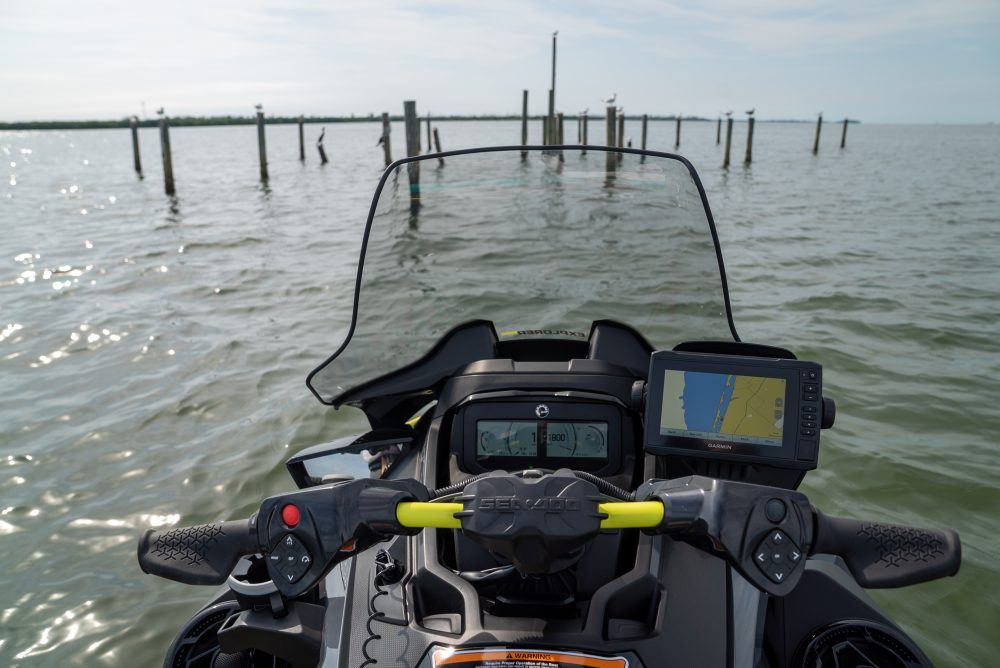
The Windshield
Conditions during our trip were far from ideal to be testing the first production craft to sport a windshield. Namely they were near perfect, with warm temps, calm-to-downright glassy water conditions and, despite a dire weather forecast, a total lack of rain. Still, plenty of ride time gave me a good feel for what the addition brings to the touring market.
Weather protection will be the obvious advantage, one that will be appreciated in inverse relation to the lousiness of the conditions. In cold weather and/or rain riders will appreciate the windshield diverting the elements up and over their head or, should things get really lousy, ducking completely behind its protection, shielding their face from the weather’s blast and eyes from the unique sting rain drops can deliver at speed. The occasional splash is also deflected away as well as wind noise and pressure reduced.
It’s a combination that will be especially welcome to the adventure rider, but also one that will extend a short summer riding season well into spring and fall or, depending on where you live, open up the prospect of truly enjoying the investment in your watercraft all year round.
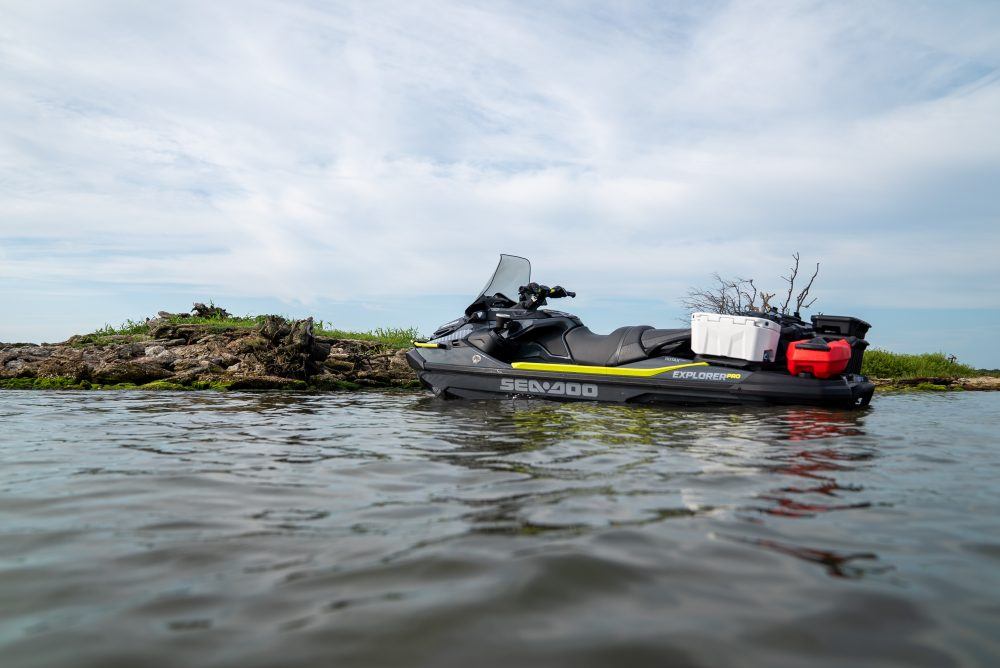 Concerns? Temperature regulation is one obvious. On a hot August day in Florida a little wind would be appreciated. A small vent can be opened at the base of the windshield to funnel some air through or you can simply stand and get into the wind on occasion. I noted a greater concern when lurching forward after encountering a firmer than expected wake and finding my face nearer to the windshield than expected.
Concerns? Temperature regulation is one obvious. On a hot August day in Florida a little wind would be appreciated. A small vent can be opened at the base of the windshield to funnel some air through or you can simply stand and get into the wind on occasion. I noted a greater concern when lurching forward after encountering a firmer than expected wake and finding my face nearer to the windshield than expected.
That concern was mostly alleviated by two features. First, the fact that the windshield actually slides forward several inches when pressure is applied and, second, that it will completely release and hinge all the way forward at the base should that pressure increase. (How much pressure are we talking? I was able to push the windshield forward with ease and have it drop forward with just a firm push.)
Still, it’s best to be aware of its presence and ride accordingly. For riders that wish to selectively choose when they want to take advantage of the windshield, it easily detaches with hand tools.
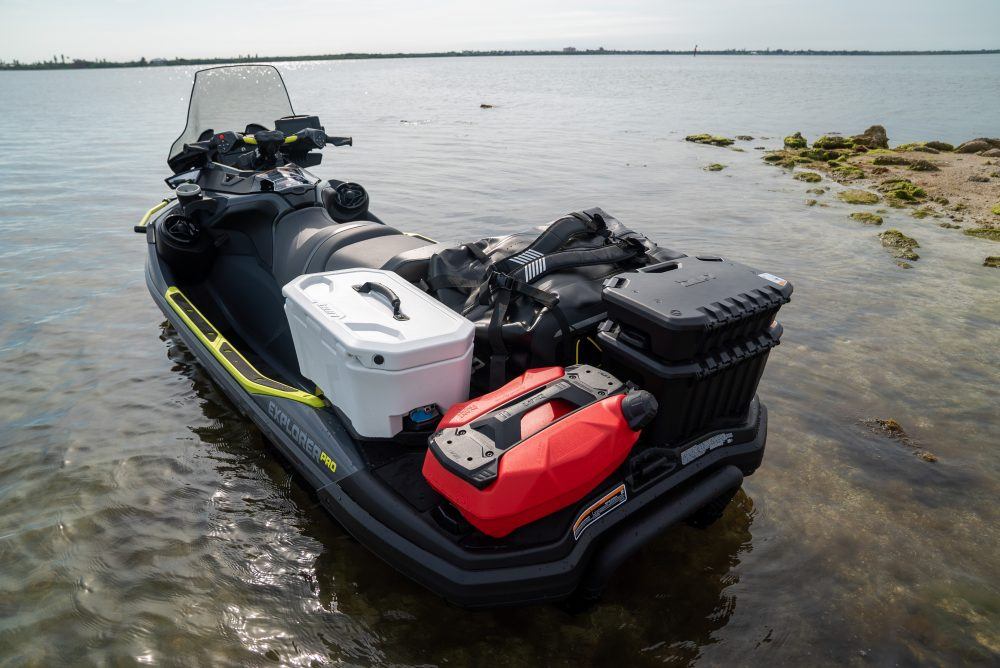 I did note a slight distortion when looking through the material. It’s nowhere near enough to dissuade you from taking advantage of the windshield’s protection in the right conditions, but it does make it a little harder to “read” oncoming water. Similar windshields have been around for years in the snow and motorcycle markets but ideally I’d like to see a little better optical clarity, especially given the fact that water is an ever-changing environment compared to the relatively predictable surface of pavement, dirt or snow.
I did note a slight distortion when looking through the material. It’s nowhere near enough to dissuade you from taking advantage of the windshield’s protection in the right conditions, but it does make it a little harder to “read” oncoming water. Similar windshields have been around for years in the snow and motorcycle markets but ideally I’d like to see a little better optical clarity, especially given the fact that water is an ever-changing environment compared to the relatively predictable surface of pavement, dirt or snow.
Storage
While the windshield will certainly grab most enthusiast’s initial attention, capacities (both storage and fuel) may be the Explorer Pro’s most game-changing trait. Based on the GTX platform, the craft already enjoys a generous 25-gallon bow storage compartment, one that can be reached without leaving the security of the saddle. Turn aft, however, and a reconfiguration of the standard GTX design greatly expands the craft’s possibilities.
For starters, a platform extension adds almost a foot to the craft’s length and includes three sets of pop-up LinQ attachment points. Between that extension and the aft tip of the saddle, Sea-Doo adds the LinQ Multi-Cargo Rack, offering even more points of attachment.
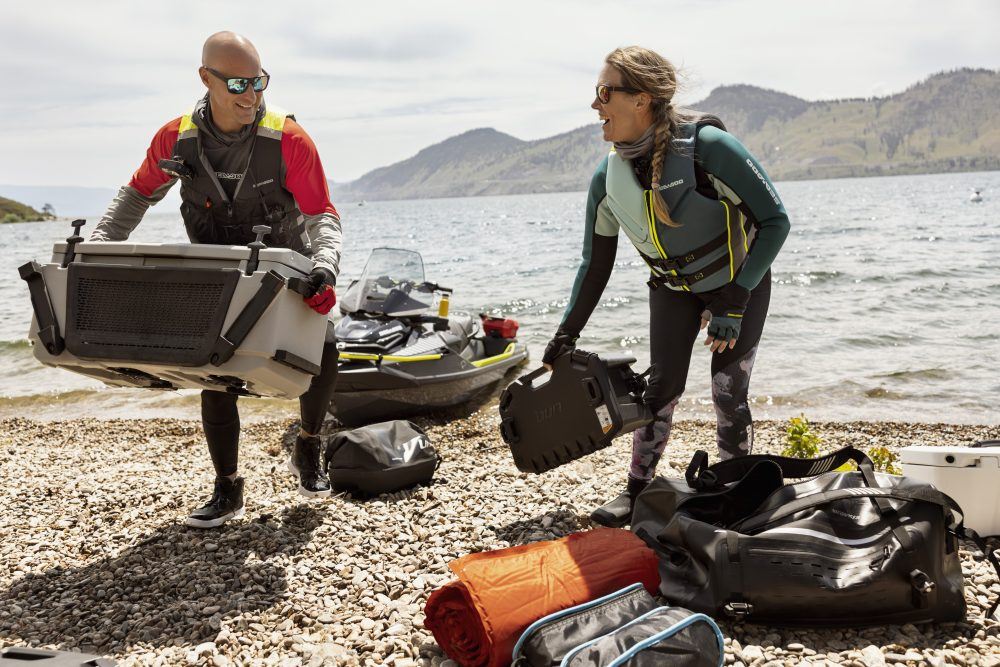 One accessory included in the package is the 26.4-gallon LinQ Explorer Bag, a massive, zippered dry bag that can be carried off the craft like a backpack. Adventuring riders can also add the full complement of existing LinQ accessories, including a variety of coolers, other storage containers and fuel caddies. Gear like food and drink, supplies, camp stoves and even a tent are now easy to bring along for the journey.
One accessory included in the package is the 26.4-gallon LinQ Explorer Bag, a massive, zippered dry bag that can be carried off the craft like a backpack. Adventuring riders can also add the full complement of existing LinQ accessories, including a variety of coolers, other storage containers and fuel caddies. Gear like food and drink, supplies, camp stoves and even a tent are now easy to bring along for the journey.
On our Florida trip, we brought all the food and supplies to cook up a chicken/fish/shrimp taco feast right on the beach. Equally intriguing for those who truly like to travel long distance is the possibility of loading up that space with up to five additional fuel caddies, effectively doubling the craft’s range — and allowing adventure seekers to plan a long-distance ride that doesn’t have to center around gas stops.
As with the windshield, there’s a caveat. Loading a cantilevered, stern hull extension with an abundance of weight does impact the craft’s handling. We definitely noticed it when traveling in a group within tight confines; encountering following wakes caused the bow to hunt more than would normally happen in this scenario. Easing into less disturbed waters, however, mostly eliminated problems. Still, like the windshield concerns, be aware and ride accordingly.
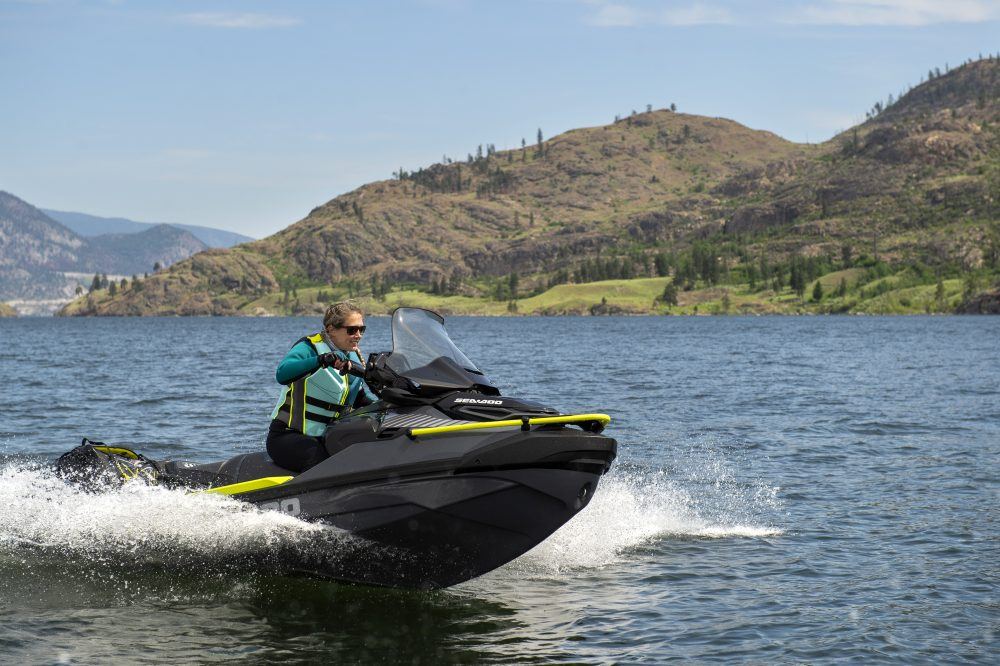
Other Features
Additional features? The bright neon, “heavy-duty front bumper” is really more of an ultra-sturdy grab rail. It comes in handy when muscling the bow up onto a beach and is also a handy spot to attach a dock line or GoPro. The rail also provides some protection when tied up to the dock. Riders who like to stand as well as sit, and just generally tailor the craft to their body and seating position will also give kudos to the adjustable handlebar riser.
Of course, expect a dose of tech. A 7-inch Garmin touchscreen GPS makes perfect sense when navigating waterways or taking on a long-distance journey, while the large digital dash display can incorporate the functions of the BRP Go app. Bluetooth audio is standard. The Explorer Pro also features Sea-Doo’s Intelligent Debris-Free Pump System, a potential game-changer when traveling in weedy or debris-filled waters.
We learned a good tip while repeatedly beaching the craft during our Florida journey. Activate iDF the first time you start after coming off the beach so that you blow out the sand, rocks, shells and other debris that may have washed into your pump.
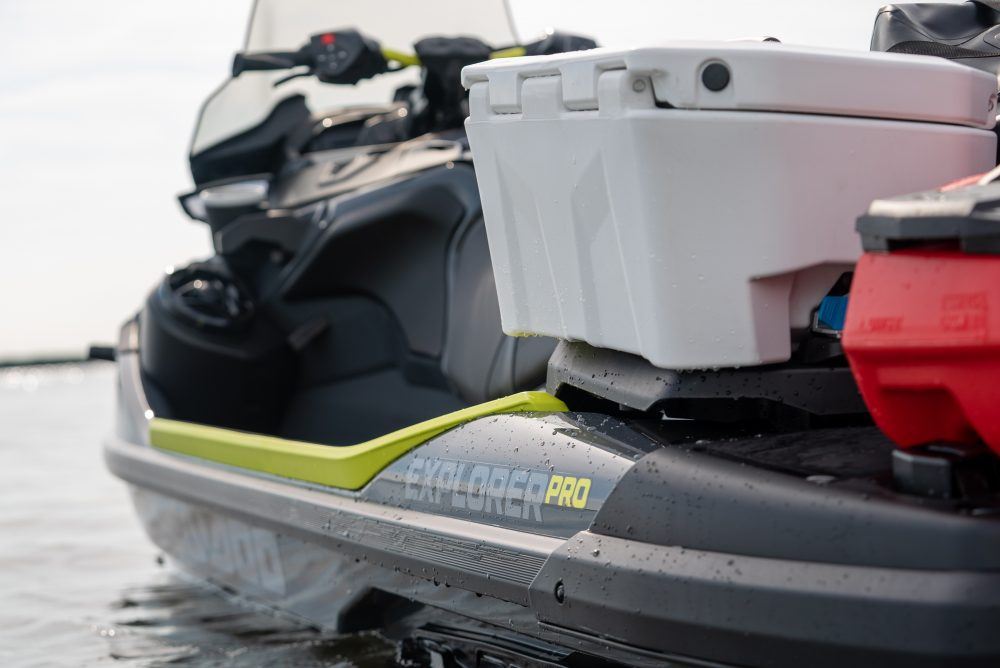 Competitors? Like Sea-Doo’s Fish and Wake models, no other manufacturer has produced craft this dedicated to a specific market, opting instead to take a broader, accessory-driven approach. Yamaha’s RecDeck offers the space and secure attachment points for items like a cargo rack, coolers, fishing gear, even casual seating. Kawasaki offers a rail-based attachment system for securing accessories on the stern of its flagship model, likewise increasing storage and fuel potential.
Competitors? Like Sea-Doo’s Fish and Wake models, no other manufacturer has produced craft this dedicated to a specific market, opting instead to take a broader, accessory-driven approach. Yamaha’s RecDeck offers the space and secure attachment points for items like a cargo rack, coolers, fishing gear, even casual seating. Kawasaki offers a rail-based attachment system for securing accessories on the stern of its flagship model, likewise increasing storage and fuel potential.
Abundantly clear to all three manufacturers — as well as this longtime enthusiast? People are doing more with personal watercraft than ever before. Sea-Doo clearly aims to offer the most evolved craft to help them do it.
Get PersonalWatercraft.com in your Inbox!
Like PersonalWatercraft.com on Facebook
Comments
Most Popular

2025 Yamaha JetBlaster PRO 2-Up Review

Remembering the Sea-Doo XP

2024 Kawasaki Jet Ski STX 160X Review

2017 Kawasaki Jet Ski Ultra 310LX Review

2024 Yamaha GP HO Review





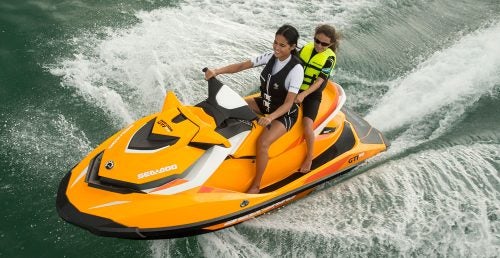
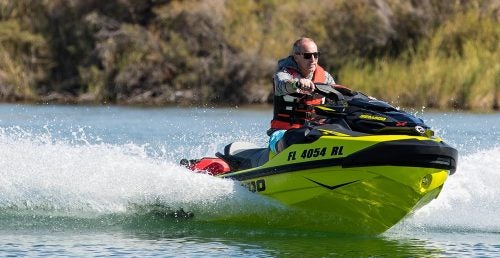







 Your Privacy Choices
Your Privacy Choices